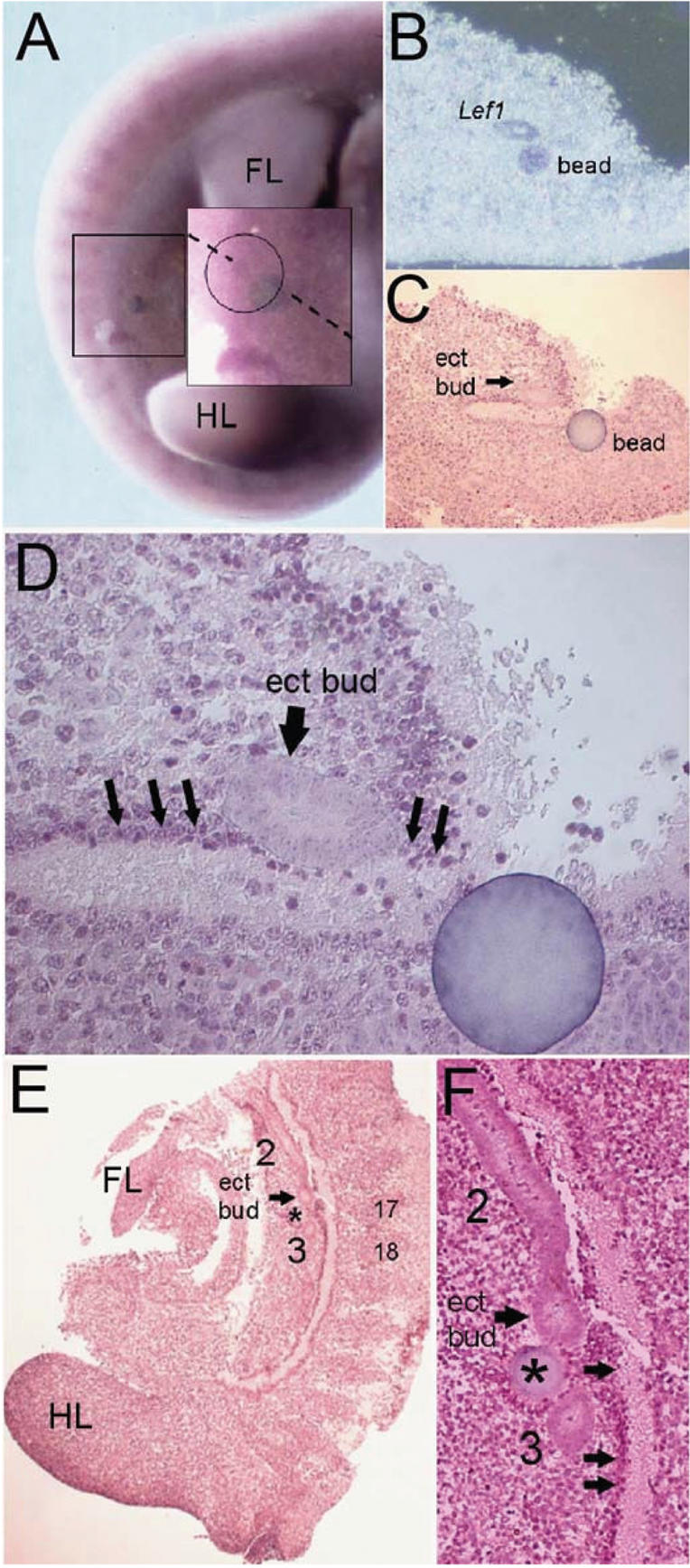Figure 8.

Nrg3 can induce ectopic mammary gland bud formation and Lef1 expression in cultured mouse embryos. Numbers denote the positions of the mammary gland anlage that have formed during the culture period. (FL) Forelimb bud; (HL) hindlimb bud. (A) Whole-mount in situ hybridization with a Lef1 anti-sense probe of a B6 embryo implanted (at the 41-somite stage) with an Nrg3-soaked bead and cultured for 24 h. The bead was implanted along the “mammary line” between the sites where buds 3 and 4 will subsequently form. The boxed area highlights the ectopic bud that has formed adjacent to the implanted bead and is indicated by the circled area in the magnified inset. (B) Paraffin section through an Nrg3-soaked bead shown in A shows that Lef1 expression is confined to the ectopic bud. (C) Hematoxylin-stained section through an Nrg3-soaked bead shown in A shows the location of the ectopic bud. (D) Higher magnification of C. Black arrows indicate the dense mesenchyme adjacent to the ectopic bud. (E) Sagittal hematoxylin-stained section through a B6 embryo implanted (at the 42-somite stage) with an Nrg3-soaked bead and cultured for 24 h. The bead was implanted along the “mammary line” between the sites where buds 2 and 3 will subsequently form. The asterisk indicates the location of the bead. An arrow indicates the location of the ectopic bud. (F) Higher magnification of E. Arrows indicate the dense mesenchyme observed in wild-type (B6) mice along the putative mammary line.
